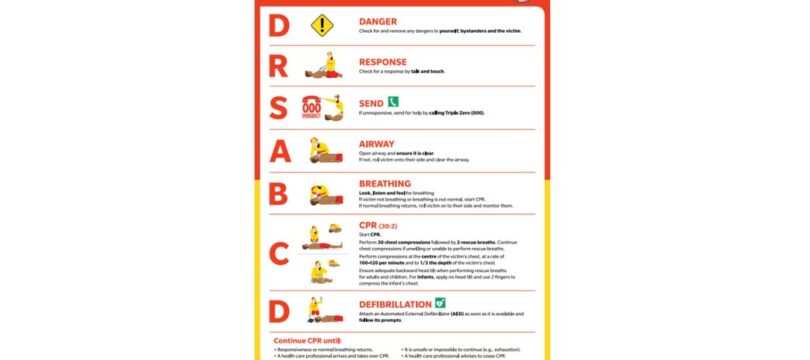
I spend most of my weekends on the beach, either coaching our youth in Surf Life Saving skills or patrolling our beaches. One of the first things you are taught when becoming a first responder, whether it be Lifesaving, a Paramedic, or Policing in a first aid situation, is the DRSABCD acronym which is pictured below.
The first D for Danger is the most critical step in the process. Ensuring the safety of yourself, bystanders, and the patient removes any risk of further injury to those involved and prevents further complicating or aggravating the situation.
There are strong parallels in the work environment. In all the workshops, I have facilitated in leadership, organisational development, and high-performing teams, it has dawned on me how so many of us ignore the warning signs in relation to the well-being of ourselves and our team.
We don’t check in enough regularly. We don’t align on what the true problem or challenges are. Further, we don’t truly seek to understand where people are at before looking to respond. We often jump straight to task and don’t take the time to understand our environment and the stakeholders (ourselves, team and client) are affected. How often do you, as a leader:
- focus on the individuals and genuinely check-in for understanding rather than waiting to respond;
- understand the pressures within the individual’s role at work and at home and take them in to consideration when working through the next steps, priorities and work allocations;
- openly discuss workloads across the group and individuals and explore solutions that balance where people are at and what they are experiencing; and
- share lessons learnt in an open and vulnerable way to assist others and ourselves in learning from the past to support ourselves better as individuals and the team.
Developing an environment where individuals are prepared to be vulnerable and open up amongst their peers and leaders to some of the challenges highlighted above is one step towards developing a high-performing team. It creates psychological safety and trust which are critical ingredients in any team environment. Without them, people’s security needs will never be met and they will not feel encouraged or supported to truly express how they are feeling or ask for help if they require it.
To illustrate this point, in the most recent group sharing workshop that colleague Rob McKay and I facilitated, utilising the Human Synergistics LSI tool, we found that helping the individuals to understand the relationship they have with themselves first enables them to become more constructive in their thinking and be more open to sharing. Having individuals within a team work through this process simultaneously and share this journey helps to build trust and a common understanding within the group, which improves your team’s overall well-being and culture.
Putting you and your team first is the first step. Choosing the right coach and tools to facilitate this process is the next critical step to improving your team’s well-being and culture.



